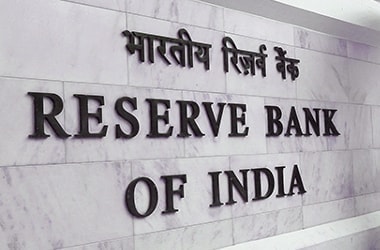
The RBI has cut the repo rate by 25 bps to 6%. This was on expected lines as market consensus predicted a 25 bps cut.
Reverse repo rate has also been cut by 0.25 per cent to 5.75 per cent.
The six member monetary policy committee voted on the basis of a majority for a cut. Dr. Chetan Ghate, Dr. Pami Dua, Dr. Viral V. Acharya and Dr. Urjit R. Patel were in favour of the monetary policy decision.
Dr. Ravindra H. Dholakia voted for a policy rate reduction of 50 basis points and Dr. Michael Debabrata Patra voted for status quo.
The cut in rates comes against the backdrop of slowing credit growth, very low inflation and low economic growth.
Retail inflation has fallen to a five year low of 1.5 per cent in June and expected to remain soft for a while longer. Bank credit is growing at just a little over 6 per cent year on year.
The economy has slowed down through the past five quarters from a high of 9.1% registered in the fourth quarter of fiscal 2016 to a level of 6.1% in the fourth quarter of fiscal 2017.
Factory activity contracted to an 8-year low with the purchasing managers’ index at just 47.9 points in July.
The RBI noted in its statement that actual headline inflation for Q1 has tracked projections of being in the range of 2 to3.5 per cent in the first half of the year.
Looking ahead, as base effects fade, the evolving momentum of inflation would be determined by
(a) the impact on the CPI of the implementation of house rent allowances (HRA) under the 7th central pay commission (CPC);
(b) the impact of the price revisions withheld ahead of the GST; and
(c) the disentangling of the structural and transitory factors shaping food inflation.
It noted that there are several factors contributing to uncertainty around this baseline inflation trajectory.
It flagged its concern that implementation of farm loan waivers by States may result in possible fiscal slippages and undermine the quality of public spending, entailing inflationary spillovers.
It said that the timing of the States’ implementation of the salary and allowances award is critical–it is not factored into the baseline projection in view of lack of information on their plans.
If States choose to implement salary and allowance increases similar to the Centre in the current financial year, headline inflation could rise by an additional estimated 100 basis points above the baseline over 18-24 months, the statement noted.
Some moderating forces are also at work, the RBI indicated.
First, the second successive normal monsoon coupled with effective supply management measures may keep food inflation under check.
Second, if the general moderation of price increases in CPI excluding food and fuel continues, it will contain upside pressures on headline inflation.
Third, the international commodity price outlook is fairly stable at the current juncture.
RBI Retains GVA outlook- The RBI noted that high levels of stress in twin balance sheets - banks and corporations - are likely to deter new investment.
- The real estate sector also may see delayed project launches as a new regulatory framework comes into play.
- The states’ finances could come under pressure with farm loan waivers and limit fresh capacity expansion.
- It said however there were upsides to the baseline projections emanating from good monsoon progress, a good kharif harvest, boost to rural demand, step up in rural allocations, and the positive impact of GST.
- The rising probability of another good kharif harvest, the boost to rural demand from the higher budgetary allocation to housing in rural areas, the significant step-up in the budgetary allocation for roads and bridges, and the growth-enhancing effects of the GST spur investment.
- External demand conditions are gradually improving and should support the domestic economy, although global political risks remain significant.
- Keeping in view these factors, the projection of real GVA growth for 2017-18 is retained at 7.3%."
Inflation outlookThe RBI's Monetary Policy committee was cautious in expressing its view that while inflation has been soft, it still remained to be seen whether it was transient or whether the 'a more durable disinflation was underway'.
The MPC noted that some of the upside risks to inflation have either reduced or not materialised-
(i) the baseline path of headline inflation excluding the HRA impact has fallen below the projection made in June to a little above 4 per cent by Q4;
(ii) inflation excluding food and fuel has fallen significantly over the past three months; and,
(iii) the roll-out of the GST has been smooth and the monsoon normal.
- It said, that consequently, some space has opened up for monetary policy accommodation, given the dynamics of the output gap and accordingly decided to reduce the policy repo rate by 25 basis points.
- Noting, however, that the trajectory of inflation in the baseline projection is expected to rise from current lows, the MPC decided to keep the policy stance neutral and to watch incoming data.
- The MPC remains focused on its commitment to keeping headline inflation close to 4 per cent on a durable basis, the statement said.